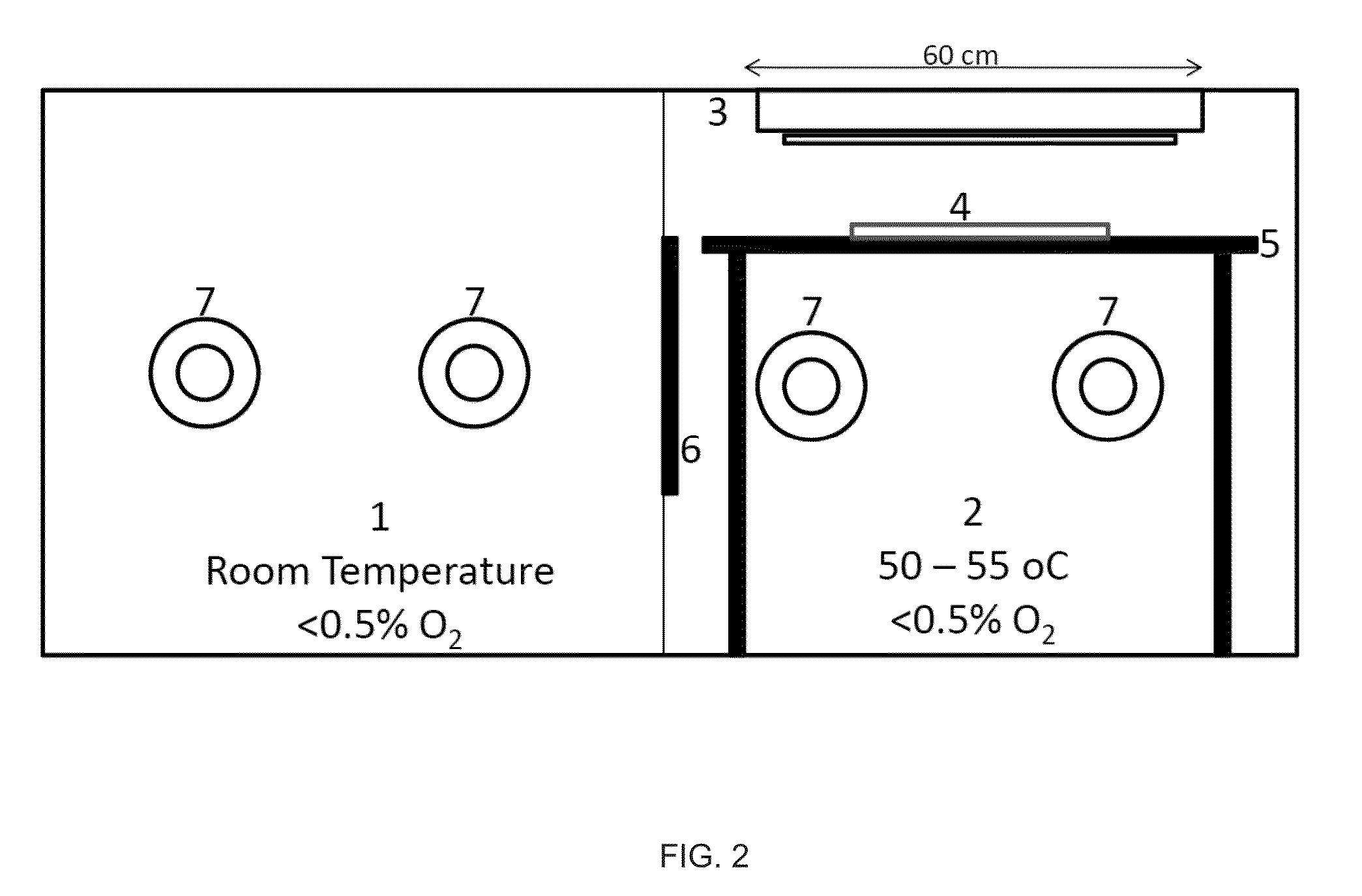Ionic silicone hydrogels
a technology of silicone hydrogel and contact lens, which is applied in the field of ionic silicone hydrogel, can solve the problems of poor clarity, high modulus, and hampered initial efforts to make silicone hydrogel contact lenses
- Summary
- Abstract
- Description
- Claims
- Application Information
AI Technical Summary
Benefits of technology
Problems solved by technology
Method used
Image
Examples
examples 6-10
[0229]The level of BHT and initiator was varied as shown in Table 17. In Example 102 wt % VINAL, was added to the formulation of Example 6.
[0230]
TABLE 17Ex#678910[BHT] ug / g14291661661661429mPDMS 10001515151515OH-mPDMS, n = 42525252525NVP50.550.550.3850.2548.5HEMA6.756.756.756.756.54VINAL00002TEGDMA0.50.50.50.50.5Norbloc22222CGI 8190.250.250.370.50.25
[0231]The kinetics for the two formulations were measured and calculated as described in Example 1, and contact lenses were made as described in Example 2. The kinetics for the formulations are shown in Tables 18-24, and the lens properties are shown in Table 25.
[0232]
TABLE 18Example 6Half-lifeComponentTime PointsR2Slopek (min−1)(t½), minNVP0.25-8 min0.975−0.02670.061511.27HEMA0.25-4 min0.993−0.20440.47071.47TEGDMA0.25-2 min0.947−0.31710.73030.95Norblock0.25-4 min0.999−0.24410.56221.23CGI 8190.25-4 min1.000−0.54381.25240.55OH-mPDMS0.25-4 min0.997−0.18850.43411.60mPDMS 10000.25-4 min0.997−0.15150.34891.99
[0233]
TABLE 19Example 7Half-lifeCo...
examples 11-17
[0241]A series of lens formulations were formed from the following reactive components:
38.5 wt % mPDMS
NVP
hydroxyalkyl methacrylate, shown in Table 25
1 wt % TEGDMA
0.25 CGI 819
[0242]The amount of hydroxylalkyl(meth)acrylate and NVP were varied to provide molar ratios of the hydroxylalkyl(meth)acrylate:NVP of about 0.2. GMMA has two hydroxyl groups. Accordingly, formulations having two different concentrations of GMMA were prepared, Example 16 (13.23 wt % GMMA, 0.408 ratio, counting both hydroxyls) and Example 17 (6.62 wt % GMMA, 0.204, counting two hydroxyl).
[0243]The reactive components were mixed with a diluent (50% TAA / 50% DA) in a ratio of 80 wt % reactive components: 20 wt % diluent. Examples 15 and 16 produce hazy reaction mixtures which were not cured into lenses. Examples 11-14 and 17 produced clear reaction mixtures which were cast into lenses using the following the procedure. The reaction mixture was degassed by applying vacuum at ambient temperature for about 17(±3) minute...
examples 18-21
[0247]Additional reaction mixtures were made varying the diluents system used and the siloxane components as shown in Tables 64 and 65, below. All mixtures were formed using 80 wt % reactive components and 20 wt % diluents. The lenses were molded, cured, processed and sterilized according to the procedure described in Example 27, above. The lens properties were measured and are shown in Tables 26 and 27.
[0248]
TABLE 26Ex 18Ex 19Ex 20Ex 21mPDMS20202020TRIS18.518.518.518.5NVP47.547.547.547.5HEMA10.7510.7510.7510.75TEGDMA1111Norbloc2222CGI8190.250.250.250.25Diluent1:1 EtOAc:EtOHTAAD3O1:1 TAA:DAEWC46.0 ± 1.6%55.5 ± 0.1%58.9 ± 0.1%57.4 ± 0.1%Haze50 ± 19 10 ± 2 12 ± 1 7 ± 0 DCANTNT66 ± 4° 69 ± 6° Modulus 100 ± 13 psi 83 ± 9 psi 80 ± 7 psi 88 ± 6 psiElongation 305 ± 105%330 ± 49%307 ± 39%285 ± 73%DkNT806475NT = Not tested
[0249]
TABLE 27Ex22Ex 24**Ex 23**Ex 25mPDMS38.538.538.538.5NVP47.547.547.547.5HEMA10.7510.7510.7510.75TEGDMA1111Norbloc2222CGI8190.250.250.250.25diluent1:1 EtOAc:EtOHTAA...
PUM
| Property | Measurement | Unit |
|---|---|---|
| haze | aaaaa | aaaaa |
| haze | aaaaa | aaaaa |
| water content | aaaaa | aaaaa |
Abstract
Description
Claims
Application Information
 Login to View More
Login to View More - R&D
- Intellectual Property
- Life Sciences
- Materials
- Tech Scout
- Unparalleled Data Quality
- Higher Quality Content
- 60% Fewer Hallucinations
Browse by: Latest US Patents, China's latest patents, Technical Efficacy Thesaurus, Application Domain, Technology Topic, Popular Technical Reports.
© 2025 PatSnap. All rights reserved.Legal|Privacy policy|Modern Slavery Act Transparency Statement|Sitemap|About US| Contact US: help@patsnap.com



